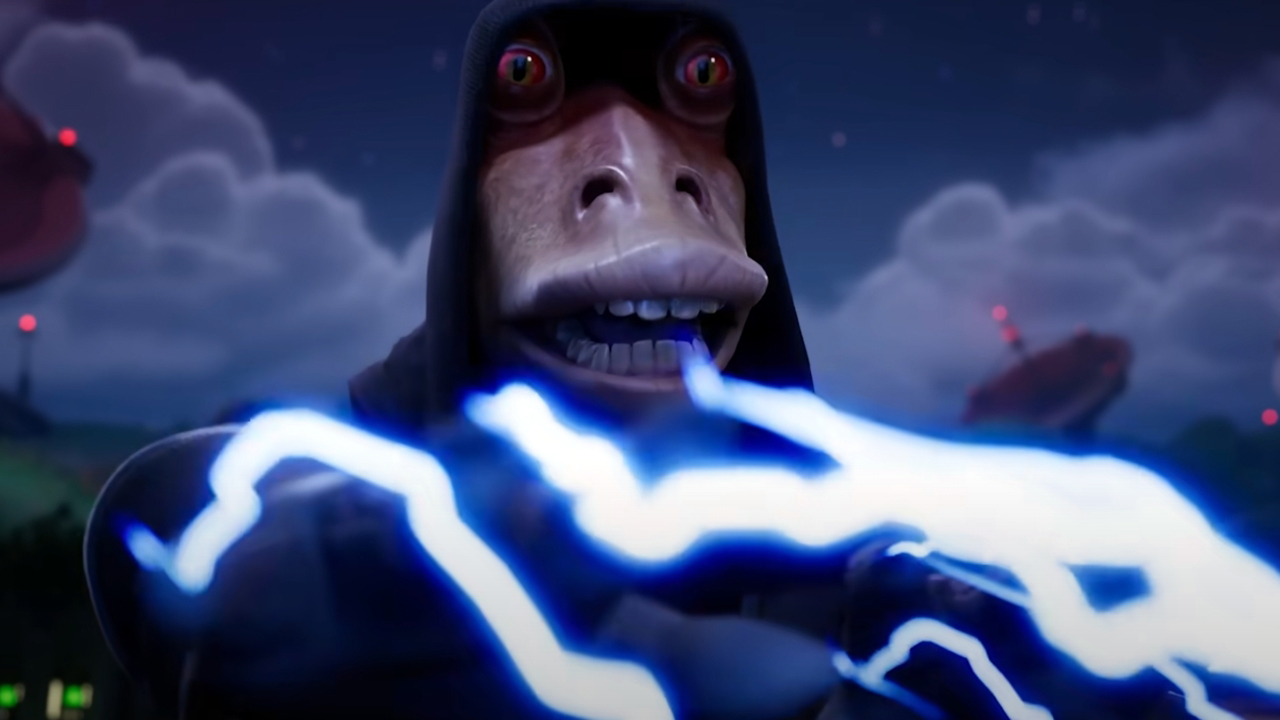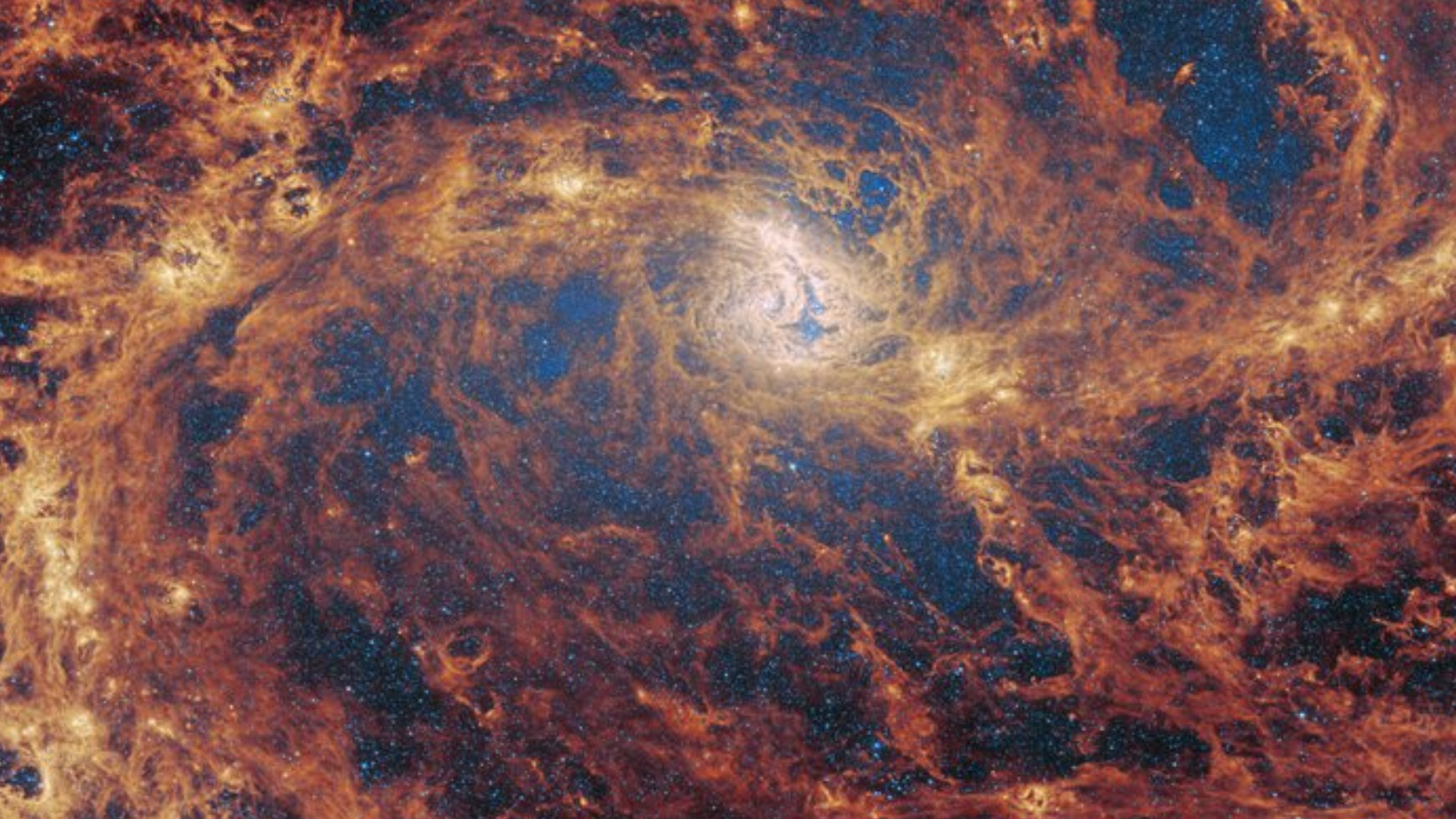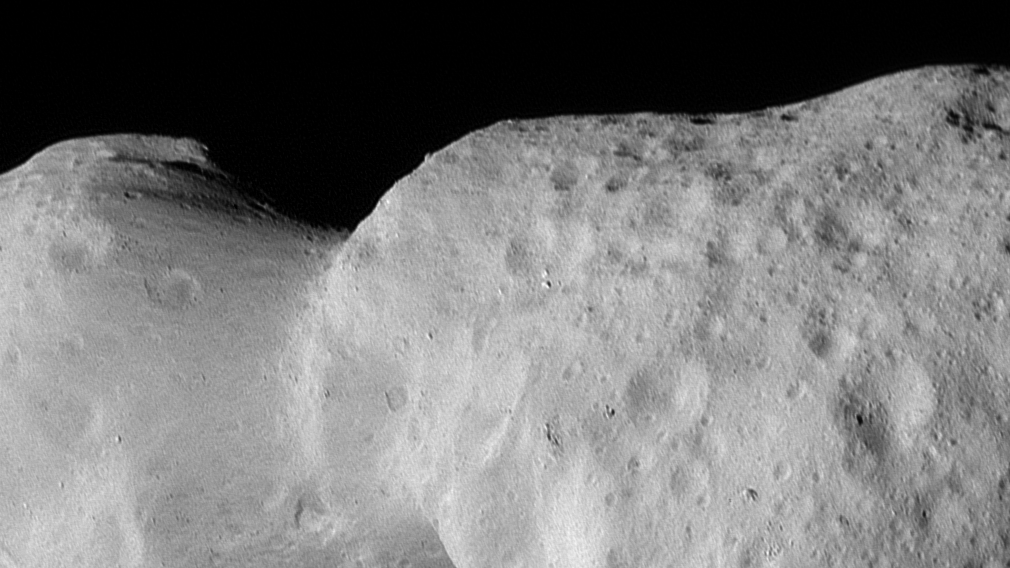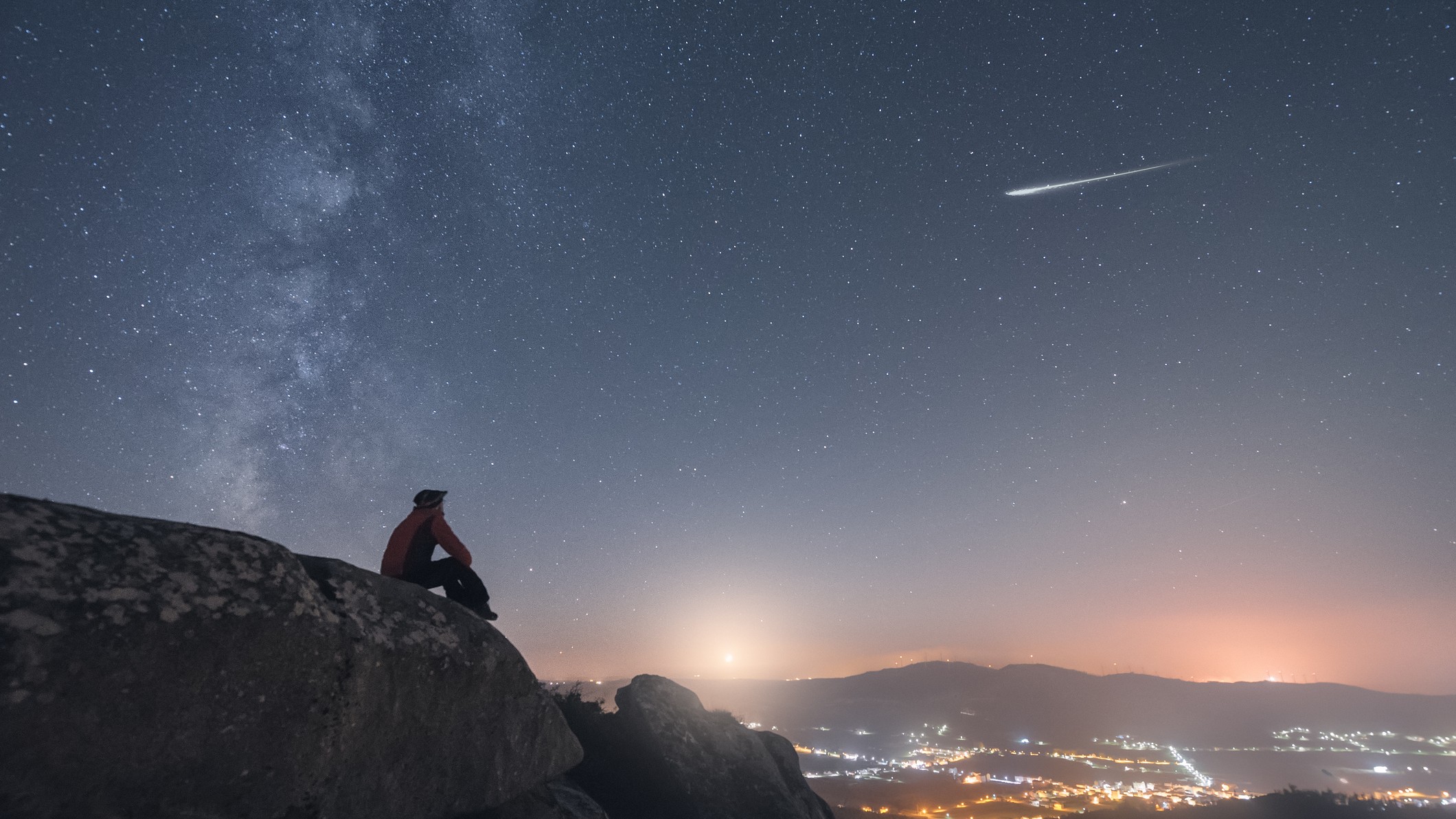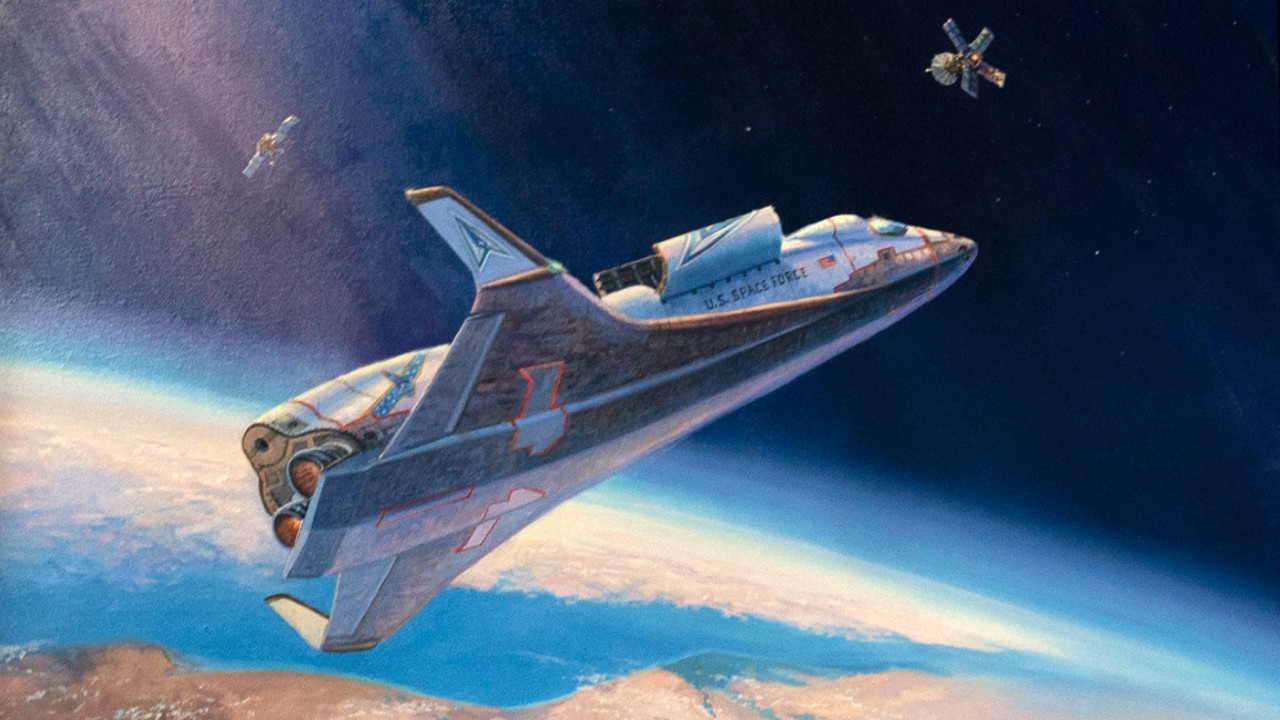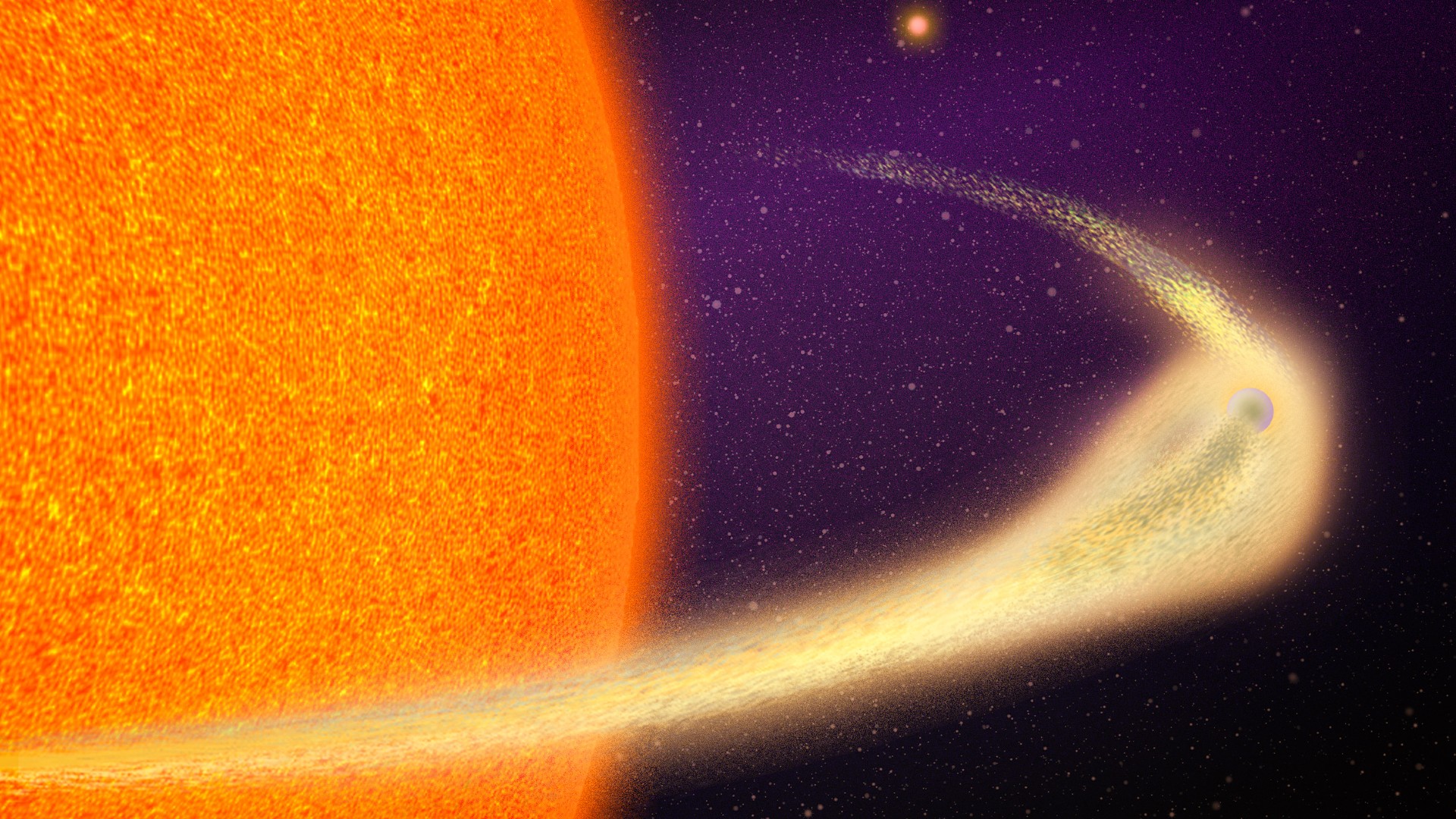
Humanity's understanding of the universe took a giant leap forward 50 years ago today.
On May 20, 1964, American radio astronomers Robert Wilson and Arno Penzias discovered the cosmic microwave background radiation (CMB), the ancient light that began saturating the universe 380,000 years after its creation. And they did so pretty much by accident.
Bell Labs' Holmdale Horn Antenna in New Jersey picked up an odd buzzing sound that came from all parts of the sky at all times. The noise puzzled Wilson and Penzias, who did their best to eliminate all possible sources of interference, even removing some pigeons that were nesting in the antenna. [CMB: Big Bang Relic Explained (Infographic)]
"When we first heard that inexplicable 'hum,' we didn’t understand its significance, and we never dreamed it would be connected to the origins of the universe," Penzias said in a statement. "It wasn’t until we exhausted every possible explanation for the sound's origin that we realized we had stumbled upon something big."
And it was indeed big. Penzias and Wilson had spotted the CMB, the predicted thermal echo of the universe's explosive birth. The landmark find put the Big Bang theory on solid ground, suggesting that the cosmos did indeed grow from a tiny seed — a single point — about 13.8 billion years ago.
The two radio astronomers won the 1978 Nobel Prize in physics for their work, sharing the award with Soviet scientist Pyotr Kapitsa.

Ancient light
Get the Space.com Newsletter
Breaking space news, the latest updates on rocket launches, skywatching events and more!
The CMB is the oldest light in the universe, dating from the first epoch in which photons could travel freely. Shortly after the Big Bang, the cosmos was a seething-hot, opaque fog of plasma and energy; things changed about 380,000 years later, when temperatures dropped enough for electrically neutral atoms to form, and the universe became transparent.
The CMB is markedly uniform, lending support to the theory of cosmic inflation, which posits that the universe expanded much faster than the speed of light just a few tiny fractions of a second after the Big Bang.
"Why the cosmic microwave background temperature is the same at different spots in the sky would be a mystery if it was not for inflation saying, well, our whole sky came from this tiny region," Charles Bennett of Johns Hopkins University in Baltimore told Space.com last year. Bennett is principal investigator of NASA's CMB-mapping Wilkinson Microwave Anisotropy Probe (WMAP), which launched in 2001 and stopped gathering data in 2010.
But the CMB also contains tiny temperature variations, which signify areas of different densities. These density fluctuations were the seeds that eventually gave rise to stars, galaxies and all the other structure that we observe in the universe today, researchers say.
Scientists have extracted a great deal of information from the CMB over the years. In March, for example, a team of astronomers announced that they had found evidence of primordial gravitational waves in the CMB — a discovery that, if confirmed, provides a long-sought "smoking gun" for the theory of cosmic inflation.
Such discoveries continue to impress Wilson.
"It's amazing to me that people can dig something out that's a tenth of a part per million of the cosmic background, especially given a lot of foreground that might get in the way," he told Space.com in March.
"And I guess my real thought is how much has come out of what can be seen in the cosmic background radiation," he added. "The real signature we saw was that it was absolutely constant, and now the tiny variations in it have turned out to hold a wealth of information." [Cosmic Inflation and Gravitational Waves: Complete Coverage]
Celebrating the discovery
Bell Labs is hosting a 50th anniversary celebration today at its Holmdale facility, which Penzias and Wilson — who are now 81 and 78 years old, respectively — will attend, as will Bell Labs president and CTO Marcus Weldon.
During the event, Bell Labs — the research arm of Paris-based company Alcatel-Lucent — will also announce the Bell Labs Prize, a competition that gives scientists around the globe the chance to introduce to the world their ideas in the fields of information and communications technology.
The challenge offers a grand prize of $100,000; second prize is worth $50,000 and third $25,000. Winners may also get the chance to develop their ideas at Bell Labs, company representatives said.
"I think it is fitting that today, as we honor and celebrate this incredible, Nobel Prize-winning achievement by Arno and Bob, we are launching a program intended to inspire world-changing discoveries and innovations by young researchers that may one day walk in their footsteps," Weldon said.
"The Bell Labs Prize is intended to recognize innovators with the ability and vision to challenge the common assumptions, and find ways to revolutionize the way we live, work, communicate, collaborate and connect with each other and our digital world," he added.
The deadline to enter the Bell Labs Prize is July 15. You can learn more about the competition here: www.bell-labs.com/prize
Follow Mike Wall on Twitter @michaeldwall and Google+. Follow us @Spacedotcom, Facebook or Google+. Originally published on Space.com.
Join our Space Forums to keep talking space on the latest missions, night sky and more! And if you have a news tip, correction or comment, let us know at: community@space.com.

Michael Wall is a Senior Space Writer with Space.com and joined the team in 2010. He primarily covers exoplanets, spaceflight and military space, but has been known to dabble in the space art beat. His book about the search for alien life, "Out There," was published on Nov. 13, 2018. Before becoming a science writer, Michael worked as a herpetologist and wildlife biologist. He has a Ph.D. in evolutionary biology from the University of Sydney, Australia, a bachelor's degree from the University of Arizona, and a graduate certificate in science writing from the University of California, Santa Cruz. To find out what his latest project is, you can follow Michael on Twitter.


